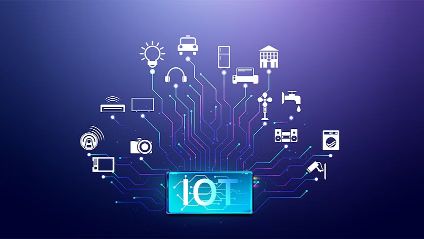Introduction
The Internet of Things (IoT) is a revolutionary concept that is transforming the way we live and interact with technology. IoT refers to the network of interconnected devices, objects, and systems that can communicate and exchange data with each other through the internet.
IoT has the power to revolutionize various industries, including healthcare, transportation, agriculture, and more. By connecting devices, we can gather valuable data, automate processes, and make informed decisions to improve efficiency, productivity, and quality of life.
Benefits of IoT
- Improved Efficiency: IoT enables the automation and optimization of processes, leading to increased efficiency and reduced human effort.
- Enhanced Safety and Security: Connected devices can monitor and detect potential risks, ensuring the safety and security of individuals and assets.
- Real-time Monitoring and Control: IoT allows remote monitoring and control of devices, systems, and environments, providing valuable insights and enabling timely actions.
- Data-driven Insights: The vast amount of data generated by connected devices can be analyzed to gain valuable insights and drive informed decision-making.
- Improved Quality of Life: IoT applications in healthcare, smart homes, and wearable devices can enhance people’s well-being and quality of life.
Challenges and Considerations

While IoT offers numerous advantages, there are also challenges and considerations to address:
- Privacy and Security: The interconnected nature of IoT raises concerns about the privacy and security of personal data.
- Interoperability: Ensuring compatibility and seamless communication between different devices and systems can be complex.
- Scalability: As the number of connected devices increases, managing and scaling the IoT infrastructure becomes more challenging.
- Data Management: Handling and analyzing massive amounts of data require robust data management strategies and technologies.
- Reliability: IoT systems must be reliable and available to ensure continuous operation and prevent disruptions.
The Impact of IoT on Healthcare and Well-being
The Internet of Things (IoT) is a network of interconnected devices that can collect, process and share data. IoT has the potential to transform the healthcare sector by enabling remote monitoring, personalized care, preventive interventions and improved efficiency. IoT can also enhance the well-being of individuals and communities by providing access to information, services and opportunities that can improve their quality of life.
Emerging Trends and Innovations in the IoT Landscape
The Internet of Things (IoT) is a network of interconnected devices that can collect, process, and share data without human intervention. IoT has been transforming various industries and sectors, such as manufacturing, healthcare, agriculture, smart cities, and more.
Conclusion
In conclusion, the Internet of Things is transforming the way people live and work. The IoT has revolutionized several industries, including healthcare, transportation, and manufacturing, and has enabled a more efficient and connected world. With the ability to analyze massive amounts of data and drive automation, the Internet of Things has paved the way for innovative solutions and improved productivity. As the IoT continues to evolve, it will undoubtedly have a profound impact on our daily lives and reshape the future of human civilization.

